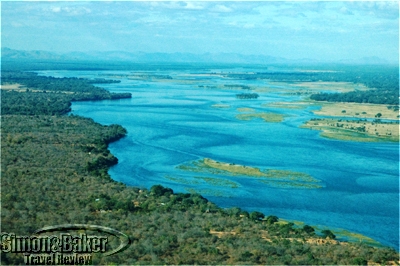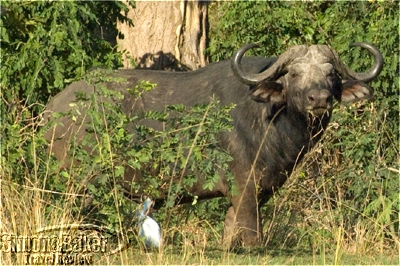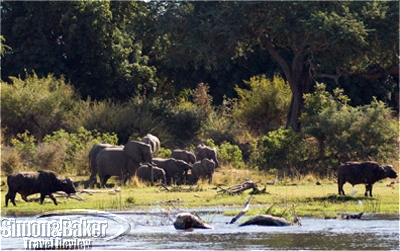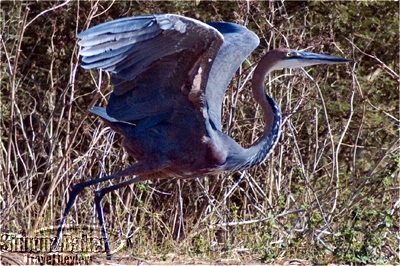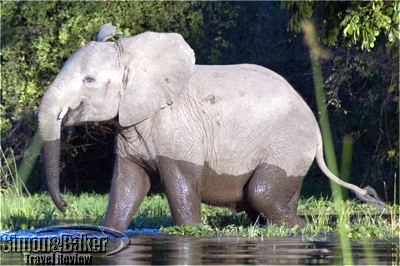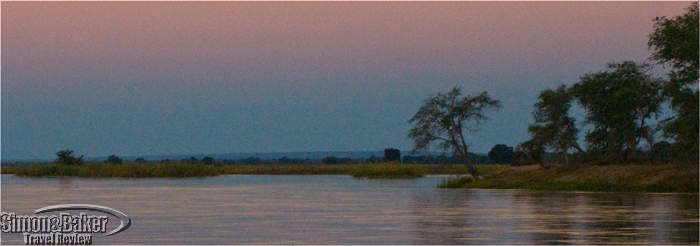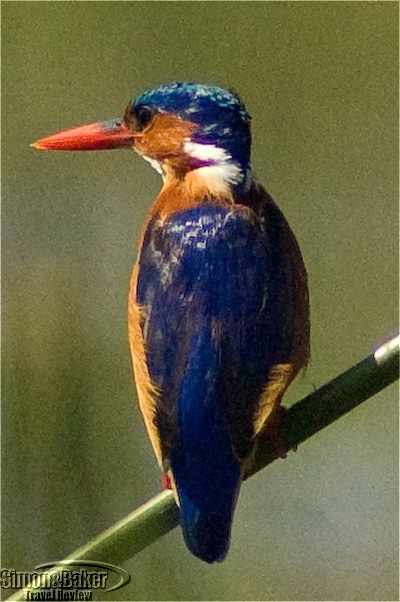
The park and its surrounding Game Management Area, combined with the Mana Pools across the river, formed an especially rich bio-diverse area of forests and wetlands that supported an abundant wildlife. The valley was home to many mammal species including hippo, elephant, buffalo, zebra, lion, leopard, genet, civet, and a large number of gazelles. It also offered some of the most abundant and colorful birdlife I have come across anywhere (estimated to include close to 400 bird species). The river bank was scalloped with channels that created lush islands along the main river. Canoeing down the quiet, shady channels was an idyllic safari experience, made possible by the excellence of the river guides at the camps I visited. They were experts at unobtrusively stirring canoes very close to lions quenching their thirst and elephants or buffalos wading from one island to the next. They also allowed me to get a close-up view of the rich variety of birds living along the river, from the giant goliath heron to the tiny jewel-like malachite king fisher.
Because of its remote location and limited infrastructure, the Lower Zambezi National Park was not easily accessible. However, its pristine isolation and the outstanding density and variety of game congregating along the river, coupled with the luxury of the camps and lodges that operated near and in the park, made it superb destination.
Cost Of Visiting Moderate to high
Currency The currency of Zambia, the kwacha, had an exchange rate of approximately 4000 kwachas for one U.S. dollar at the time of my visit.
Electrical Current 220 Volts/50 Hz. A NW-135C adapter was necessary when using electrical outlets (the kind used in the U.K.).
Health And Vaccinations There were no mandatory inoculations for travel to Zambia at the time of my visit. My local health clinic, following the Center for Disease Control (CDC) guidelines, recommended an up-to-date inoculation schedule for meningitis, hepatitis, rabies, sleeping sickness, tetanus and typhoid fever; as well as visitor precautions for AIDS and preventive medication for malaria. For daily protection from insects, I used a combination of repellant cream with CDC-recommended high DEET concentration on exposed skin, and a DEET-free spray for facial protection. Additionally, as always in tropical climates, high protection sunscreen was a daily necessity.
Location The Lower Zambezi National Park was located in southeastern Zambia on the north bank of the Zambezi River, immediately the across the river from Zimbabwe’s famed Mana Pools National Park, 94 miles (150 kilometers) down River from the Kariba Dam.
Measures Metric system
Money Issues All prices in areas that catered to tourists, including airport taxes and park fees were quoted in U.S. dollars. Because I couldn’t anticipate whether change could be made in U.S. dollars, I brought all the funds for incidentals, tips and souvenirs, in small U.S. denominations (mainly $1, $5 and $10). This ensured that I didn’t accumulate local currency along the way.
Technology The camps I visited offered running hot and cold water, and electricity. They had satellite Internet access, although service was sometimes erratic. Cellular telephone service was available intermittently along the river with a GSM 900/1800 compatible international cell phone.
Time GMT/UTC plus two hours (e.g. Continental European time)
Transportation The only ways to get around in the park were by all-wheel drive vehicles, motor boat, canoe or on foot.
When To Visit Mid-April to mid-November
Shopping And Souvenirs The lodges and camps had limited souvenir shops, stocked mainly with locally decorated textiles and some woodcarvings.
The area was also an anglers’ paradise. The Vundu, a giant catfish weighing up 100 pounds and the famous tiger fish, reputed to be the most challenging fresh-water fish, were in abundance. The camps I visited observed a strict catch and release policy.
Reviewers Article and photographs by Josette King
Would You Visit This Destination Again? Yes

